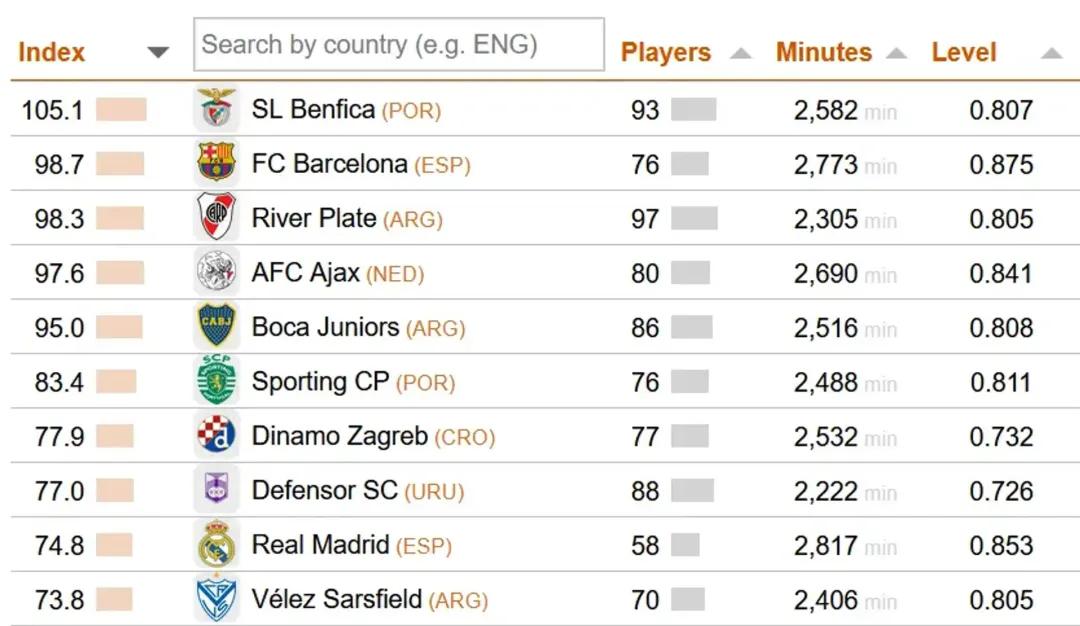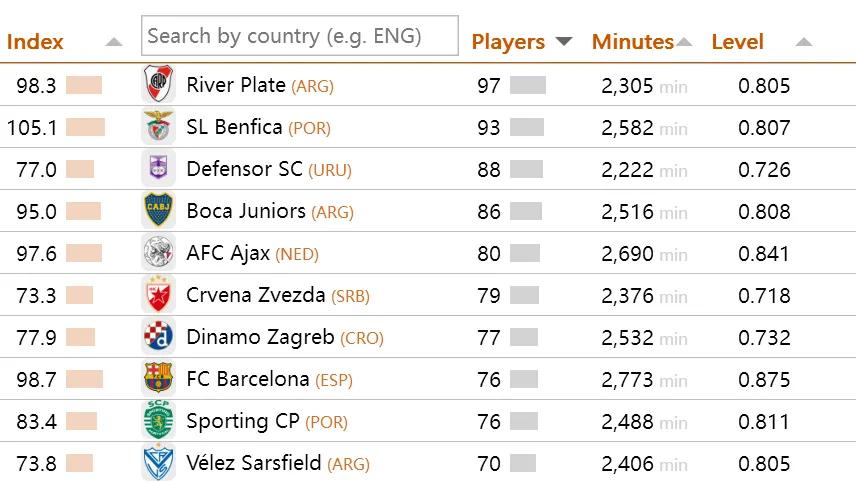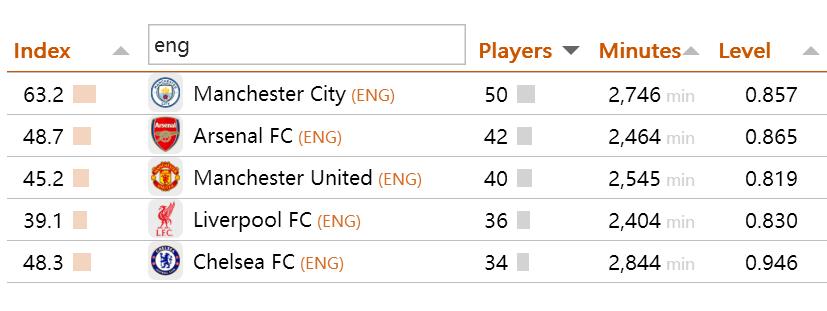Which youth academy leads the world? Football Observatory: La Masia is not number one

By Han Bing On October 22, the well-known football research group "Football Observatory" (CIES) published its global youth academy report. The report ranks the top 100 elite league clubs based on youth development over the past year. The world-renowned youth academy, Barcelona's La Masia, did not finish first; Portuguese powerhouse Benfica secured the top position for the second year running. La Masia ranked third last year, behind Benfica and Boca Juniors, and climbed to second place this year.
The Football Observatory's youth training evaluation covers the top 30 European elite leagues, 9 South American top leagues (excluding Bolivia), 3 leagues from Central and North America (MLS, Mexican League, Costa Rican League), and 7 top Asian leagues (East Asia: China, Japan, South Korea; West Asia: Saudi Arabia, UAE, Qatar; Central Asia: Uzbekistan). Eligible youth academies must have players who, between ages 15 and 21, have spent at least three years at the club.
The report evaluates three criteria: the number of youth players from these 49 top league clubs registered in first teams, their playing time, and a coefficient adjusted for league competitiveness. These factors combine into a total score. The assessment period spans from October 1, 2024, to September 30, 2025. If players did not appear in first-team matches during this timeframe, they must have played in adult-level competitions (e.g., cup or continental tournaments) in the previous two seasons. Additionally, backup goalkeepers who did not appear are also included in the evaluation.

▲ Overall score ranking, Benfica edges out Barcelona to claim first place.
Consistent with last year, Benfica has 93 youth players in first teams across clubs, totaling 2,582 minutes played. With the league coefficient factored in, they achieved 105.1 points to defend their championship (last year's score was 103.7). Barcelona's La Masia has 76 players in first teams across the 49 leagues, five fewer than last year, but their score rose to 98.7 points, moving up from third to second place.
Other clubs scoring above 90 points include River Plate (98.3), Ajax (97.6), and Boca Juniors (95.0). Notably, the top five youth academies remain exactly the same as last year, with a significant points gap separating them from others, aligning with general perceptions of the world's elite youth systems.
Regarding the number of youth players entering first teams in the 49 leagues, River Plate leads with 97 players, Benfica ranks second with 93, and Uruguay's smaller club Defensor Sporting surprisingly takes third with 88. Barcelona is tied for eighth place. In terms of youth player minutes played in first teams, the Basque giants Real Sociedad (3,394 minutes) and Athletic Bilbao (3,215 minutes) hold the top two spots, followed by Belgian club Genk (3,086 minutes) in third.

▲ Ranking of youth players entering first teams across 49 leagues, River Plate is first.
Interestingly, despite Benfica ranking first overall, their youth players' total playing time is only 2,582 minutes, placing them 32nd in that category. La Masia, second overall, has 2,773 minutes of youth playing time, ranking 15th. This shows that the number of players produced does not necessarily correlate directly with total playing time.
Regionally, Argentina has 15 clubs in the top 100, Brazil 11, and the nine South American top leagues collectively contribute 45 clubs, nearly half the total. Europe’s 30 top leagues have 51 clubs in the list, just over half, with Spain leading with 8 clubs, France’s Ligue 1 has 5, and Portugal, the Netherlands, and Belgium each have 4.
The English Premier League has 5 clubs listed, with traditional top six sides all included except Tottenham. Within the EPL, Manchester City’s youth academy stands out: it has the most youth players entering first teams (50), the longest playing time (2,746 minutes), and the highest total score (63.2), far ahead of second-place Arsenal (48.7).

▲ Five Premier League clubs made the list, with Manchester City ranking first.
Among the big five European leagues, the German Bundesliga has the fewest clubs on the list, only Bayern Munich, while Serie A ranks second lowest with three clubs.
In Asia, only Uzbekistan’s Pakhtakor Tashkent (ranked 90th) made the list, with 57 youth players entering first teams and a total of 1,899 minutes played. Last year, four Asian clubs were in the top 100: besides Pakhtakor (52nd), there were Nasaf (72nd), Shandong Taishan (95th), and Shanghai Port (99th). Shandong had 40 youth players in first teams last year, while Shanghai Port had 34.
Although the Football Observatory’s youth report may not be perfectly objective or precise, it broadly reflects the overall level of youth development worldwide. Uzbekistan’s consistent presence in the top 100 for two years highlights the rise of football in this Central Asian nation. In contrast, Chinese football’s youth development clearly still has a long way to go.



Wonderfulshortvideo
🥶🥶


The Nuno Mendes x Cristiano Ronaldo link-up 😮💨🔗


Harry Kane is the BEST striker Thomas Tuchel has EVER worked with 👀🏴


User esportapi has posted a video.


Marcus Rashford pays tribute to Cristiano Ronaldo 👏


Cristiano Ronaldo is the


User FieldFrenzy has posted a video.








 Links
Links
 Contact
Contact
 App
App


